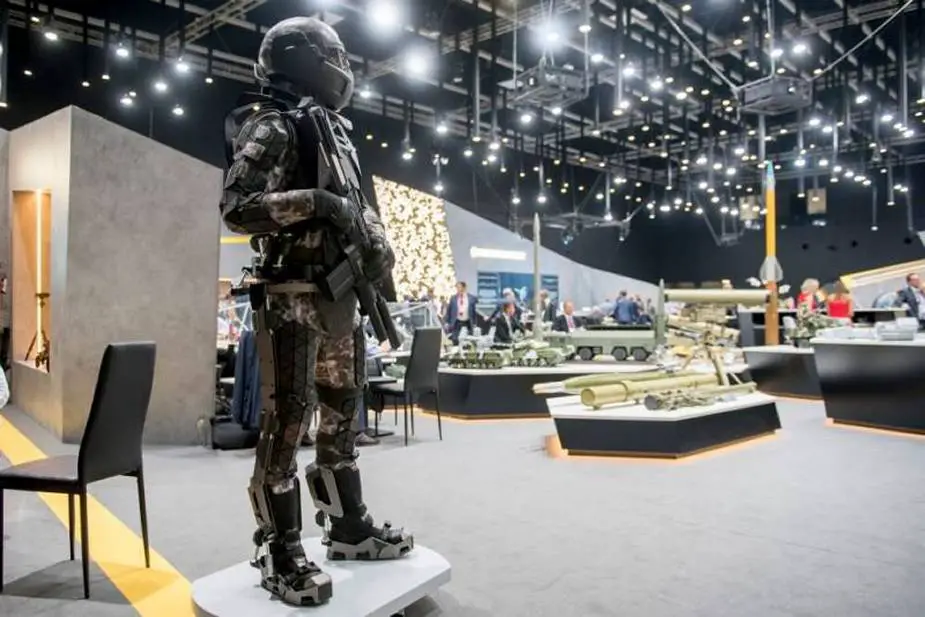Russia has launched R&D to create fourth generation combat outfit of a soldier. It will replace third-generation Sotnik, which is also being designed to replace second-generation Ratnik, Rostec Corporation said. It is doing the research on orders of the Defense Ministry.
Follow Army Recognition on Google News at this link

Concept of BEV "Ratnik-3" (Picture source: Rostec)
TsNIItochmash and the Kalashnikov Concern, as well as other companies participate in the design. The R&D will analyze advanced outfits of the world armies and determine the guidelines to develop the fourth-generation outfit. A full set of research and development, as well as technological research will be done. The effort will result in an interdepartmental complex goal-oriented program to develop the outfit by 2035.
“The fourth-generation outfit is a principally new gear, which demands to look into the future. It will unite the latest achievements of the Russian military-defense complex, new protection and life-support systems, robotized equipment and integrated information exchange systems. The outfit demands a big volume of research. We have begun the first stage to determine tactical and technical requirements,” Rostec Industrial Director Bekhan Ozdoev said.
Rostec supplied over 300,000 sets of second-generation Ratnik outfit by the end of 2020. The corporation is designing third-generation Sotnik and some of its elements are undergoing preliminary trials. Sotnik will have a low weight and increased protection due to durable and light super highly molecular polyethylene fabric. Military specialists are designing tactical and technical requirements for Sotnik. They are to be ready in 2021.
The elastic material of the outfit fits the soldier’s figure and provides free movement to carry additional gear. The protection class of Sotnik against outside damage is higher than predecessors. It can stop a fragment flying at a speed of 670 m/sec and cushion the shock impulse by absorbing means.
The third generation of the outfit will increase the capabilities of a soldier at least 1.5 times and decrease the mass 30 percent. The outfit will exceed foreign analogues. It will have an active exoskeleton to increase the capabilities of the supporting-motor apparatus. The electronic vizard allows firing from a gun guided by a laser beam. The new outfit option will be single for the airborne and ground forces of Russia.
Rostec CEO Sergey Chemezov said Sotnik has to replace Ratnik in 2025. “It will be a completely new outfit with the best high-tech designs of Russian enterprises,” he said. Sotnik is a new design based on Ratnik experience.
Many countries are developing new-generation outfit. The soldier of the future program is spreading, although most designed outfits have not been accepted into service. The design remains at the initial level despite announcements to upgrade the combat outfit.
Thus, the Russian latest design of individual outfit of a soldier corresponds to modern trends. It is appropriate to compare second-generation Ratnik with modern western IdZES 2.0. It can be stated that the Russian lead designer TsNIItochmash is ahead of the German Rheinmetall Defence. Ratnik is built by a modular principle and can be supplied in several configurations with various electronic equipment. The outfit can be configured according to each individual soldier. Ratnik can be supplied in an ordinary and assault option. The third-generation outfit is to have an electronic vizard. High protection is an important advantage of the Russian outfit.
A tactical drone and sound localization system are offered for IdZES 2.0. The modular Ratnik structure makes it easy to integrate the same components. It is therefore possible to state that Russian individual outfit of the new generation at least corresponds to modern world trends and is often ahead of them, Rostec said.
© Copyright 2021 TASS / Army Recognition Group SPRL . All rights reserved. This material may not be published, broadcast, rewritten or redistributed.














